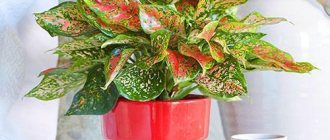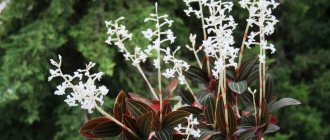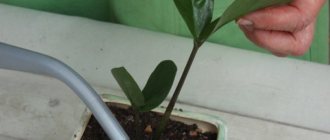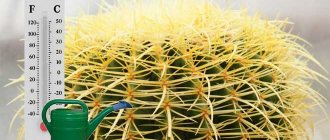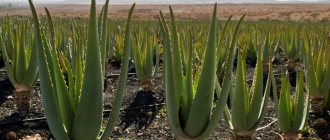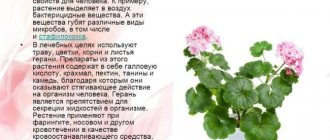Primrose (Primula) is a herbaceous plant from the Primrose family, which unites about 500 species of annuals and perennials. In nature, primrose can grow anywhere where the climate is temperate with sufficient soil moisture. The culture prefers the banks of rivers, mountain streams of North America, Europe, and Asia.
Primrose can be grown in the garden, as well as indoors. For growing in pots, gardeners prefer to choose perennial species that can delight with their flowering throughout the year. But most varieties of primrose bloom in winter and in the first half of spring.
Types and varieties of primrose for growing at home
Garden species adapted to growing outside are more resistant to cold. There are varieties that do well both indoors and outdoors. The types of primroses described below are mainly grown in pots.
Stemless or common (vulgaris)
A hybrid that can be grown both in the garden and indoors. This is a perennial up to 20 cm high, which is found in Asia, Europe, and Africa. The leaves are elongated, elliptical, bright green. The flowers are solitary, placed on thin peduncles. The color of the flowers may vary depending on the variety.
Popular varieties of common primrose:
- Sphinx Aprico,
- Sphinx F1 neon Rose,
- Eclipse Violet with Rim,
- Pioneer F1.
Chinese (chinensis)
Perennial, about 0.3 m high. The leaf blades are petiolate, rounded-heart-shaped, with denticles along the edges, collected in a rosette. Flowers up to 4 cm in diameter are collected in umbellate inflorescences. Depending on the variety, Chinese primrose flowers can be simple or double and vary in shape and shade.
Kewskaya (kewensis)
A rare species that is intended specifically for growing in a pot. The leaves are green, with a whitish coating and jagged edges up to 20 cm long. The inflorescences are umbellate, collected on a long peduncle. The flowers are small, yellow in color.
Soft or soft-leaved (malacoides)
A herbaceous plant native to China, up to 0.5 m high. The leaves are rosette, with serrated edges, heart-shaped or oval. The peduncles are tall, leafless, there can be up to 8 of them on one bush. Each one contains up to 10-20 flowers. They can be red, pink or white, with a yellow spot in the middle. Blooms in late winter - early spring.
Popular varieties:
- Mars,
- White pearls,
- The Snow Queen,
- Juliet.
Obconical
One of the most popular species comes from China, no more than 20 cm high. Perennial with oblong heart-shaped leaves, serrated along the edges. The plant blooms in early winter and spring. But with good care it can bloom almost all year round. Flowers are located on short peduncles. Species obconica contains substances on its leaves that can cause allergies.
New varieties and hybrids have been developed that are safe for allergy sufferers:
- Touch me
- Grace F1,
- Libre F1.
Temperature
The optimal temperature for primrose in winter and spring, during the flowering period, will be 10-15 degrees. If the temperature rises higher, this negatively affects flowering: flowers can quickly fall off, and the flowering period itself is greatly reduced.
An exception is the species “primrose obraconical” - it is thermophilic and requires a temperature of 16-20 degrees for normal development.
After flowering, it is recommended to take the primrose out into the fresh air : to a loggia, balcony or plant it in the garden. It is important to choose a shaded place. With the onset of cold weather, the primrose returns to the house or apartment.
Home care
Primrose is considered a non-capricious plant. Therefore, even an inexperienced gardener can grow it at home. But in order to make the plant bloom long and profusely, you need to create suitable conditions for it.
Location and lighting
The flower loves good lighting. Therefore, it is recommended to place the pot in a bright room, but without direct sun. Windows in an eastern or western location are suitable for primrose. Northern window sills are also allowed if there is enough light on them. The main thing is to avoid drafts. In winter, when primrose blooms, it is necessary to provide it with additional lighting.
Choosing a flowerpot
Small but wide pots are more suitable for primroses. For each subsequent transplant, take a container several centimeters wider than the previous one. You should not take a pot that is too deep to avoid acidification of the soil and rotting of the roots.
Soil and drainage
When choosing soil for primrose, you can choose ready-made mixtures that are designed specifically for Primroses. A substrate for geraniums is also suitable.
You can prepare the substrate yourself:
- leaf soil (1);
- peat (1);
- sand (1);
- turf (1).
Be sure to lay a layer of drainage at the bottom of the pot. This could be gravel, expanded clay, broken shards.
Planting and transplanting
Perennial species and varieties require regular replanting. It is recommended to replant young plants no more than once a year. This can only be done after flowering. During this period, the primrose still has the strength to lay new buds, it quickly adapts to new conditions.
Transplant procedure:
- Place a 2 cm thick layer of drainage in the pot. Sprinkle a little soil on top.
- Remove the primrose from the old pot without damaging the roots.
- Carefully transfer it into a new container. Fill the free space with soil, lightly press it down and water it.
Step-by-step video - instructions for transplanting Primrose after purchase:
Air temperature and humidity
Primrose prefers cool conditions. During flowering, the temperature should be at +12..15°C. For reverse conical primrose – +16..20°С. It is difficult to achieve such a temperature at home. Therefore, from the beginning of spring, you can take the flowerpot out to a cool balcony or veranda. After flowering, you can even plant the plant in the garden under the diffused light of tree crowns. In winter, the flower pot should be placed away from radiators, closer to a cool window.
The crop has no special requirements for air humidity.
But she doesn’t like it if the room is very dry. As a result, the tips of the leaves of the plant begin to dry out. On a note! To increase humidity, you can spray primrose leaves with warm, soft water. It is important to ensure that it does not get on the flowers. Nearby you can place a container of water or a tray with wet expanded clay.
Feeding and fertilizers
You can apply fertilizer after the buds begin to form. It is recommended to use complex fertilizers for flowering plants 2 times a week. But the dosage of the drug should be 2 times weaker than indicated in the instructions. Primrose does not tolerate excess salts. Therefore, it is important not to oversaturate the soil with fertilizers. Fertilize until the end of flowering.
Watering
It depends on the health and flowering of primrose. Watering should be regular but moderate. The soil should always be slightly damp during flowering. To maintain its moisture, you can place the pot on a tray with damp sphagnum moss and periodically add water to it.
When the crop has faded, the soil is moistened only after drying by 2-3 cm. During rest, the plant should be watered less frequently, avoiding stagnation of water and acidification of the soil.
Flowering period
Unlike most other indoor plants, which go into a dormant period in the fall, for primroses this is the period when they prepare to bloom. Primrose requires regular watering, spraying, and good lighting. It can bloom in different shades, depending on the species. To prolong flowering, it is necessary to trim off faded flowers in time.
Transfer rules
Since any type of replanting is stressful for the plant, you first need to determine whether it is worth replanting at all. In order not to spoil the plant during the replanting process, it is advisable to take into account several important nuances. You need to know when to plant primrose by division, as well as where exactly it is best to plant the specimen, and in what substrate.
Blooming primrose
The flower is not suitable for high temperatures. In order for the plant to take root faster and get used to the new place, replanting should be done when the outside temperature is above 13 - 15 degrees. Only one of the species will not take root if the temperature is below 16 - 18 °C - Reverse conical primrose.
For replanting you need to choose good soil
Dependence on variety and type
To determine exactly when to replant primrose - in spring or autumn, you need to know not only the specific type of variety, but also how many years a specimen can be grown in one place. Perennial species require periodic change of location, while annual species can be planted during the growing season.
Usually the following rule applies: annual representatives of the crop are planted exclusively in the spring (early to mid-March), and perennials only in the fall (early to late September). Using this recommendation, it is not necessary to individually select the time for planting a bush.
Variety of species
Time and place
Usually, transplantation is carried out after the bush has reached a very large size. The question arises as to when to plant primrose so that the specimens have time to take root well. The ideal time is September. The first month of autumn is still quite warm, which makes it possible to fully develop. Then the temperature gradually decreases, which hardens the plant.
To choose the right time for transplantation, you need to know the variety of primrose
Transplant frequency
Perennial primrose requires 1 change of location every 3 to 4 years. This is a fairly unpretentious flower that does not require too much attention to itself. Perennial primrose, which is planted and cared for at home in a complex manner, needs to be replanted for the following reasons:
- Reduced growth and flowering activity. Minimized number of buds.
- If the bush grows strongly and the leaf becomes deformed.
- If the soil is infected with serious diseases, it is necessary to replant the bush at another time.
- When the root system or stem neck is exposed. If this problem is not corrected in time, the root system will be subject to serious stress or disease.
Need for transplant
You also need to take into account the type and variety of primrose - the number of transplants and the principle of their implementation depend on this. For example, for Japanese primrose, a single transplant at 4 years is considered standard.
Reproduction methods
Indoor primroses are propagated in different ways.
Dividing the bush
The procedure is carried out after flowering has ended. For replanting, take a plant that is more than 3-4 years old. First place the flower in a shaded place, water it from time to time without drying out the soil. Carefully remove the bush from the pot and shake the soil. Divide it into parts so that each has a growth point. Sprinkle the cut areas with ash. Immediately plant the cuttings in a low container, cover the top with film, and place in a bright place. Periodically remove the cover and water the substrate abundantly. After a few weeks, transplant the divisions into separate pots with a suitable soil mixture.
Cuttings
The method is suitable for those primroses that have only one rosette and there is no way to divide the bush. Separate a leaf with a petiole and bud from the parent plant with a sharp knife. Cut the top of the leaf in half. Plant the cuttings in a mixture of peat and sand to a depth of 1 cm at an angle so that the bud looks up. Leave to root at t +18°C. Rooting occurs within 2.5-3 months. After the roots appear and 3-4 young leaves form, transplant the plants into individual containers.
Propagation by seeds
This is the most troublesome and time-consuming method of reproduction. Seeds can be sown in summer and in late autumn - early winter, depending on the type of primrose. Prepare shallow and wide containers, fill them with a mixture of deciduous soil and sand. Distribute the seeds on the surface of a damp substrate, cover the container with glass, and place in a bright place without direct sun with a temperature of about +18°C. Periodically, the cover must be removed to ventilate the crops and moisten the soil. After a few months, thin out the stronger seedlings and transplant them into individual pots.
How to plant primrose
The description of the flower says that primrose can grow both outdoors and indoors. Planting a flower is an initial and very important stage, which determines how the flower will grow.
First you need to prepare:
- A pot that fits properly. The pot should be low and wide. If you take a pot that is too large, the flower will put all its energy into the roots and not into flowering.
- Soil - it must be disinfected so that disease and bacteria do not develop in the soil. It is enough to spill the soil with a solution of potassium permanganate. The composition of the soil should be sand and leaves
Landing rules:
- Drainage needs to be placed at the bottom
- The drainage is covered with ready-made substrate
- Make a hole in the ground to plant a flower there.
- Place the plant with roots in the hole, and then sprinkle the roots with soil.
- Now you need to press down the soil a little, compacting it deeper into the pot
- After this, the bush is watered very well and removed to a lighted place.
Forcing primrose
During forcing, the primrose is transplanted into more favorable conditions for development. Thanks to this, you can get flowers faster, but at the same time the root is depleted. And the plant requires a longer recovery.
Primroses older than 2 years are used for forcing. Before the onset of frost, dig up a flower with a lump of earth. Immediately plant in a flower pot. Bring it into a cool room with a temperature of +4..8 degrees (can be in a cellar or basement). There is no need to water the plant. At the end of January or beginning of February, move the primrose to a bright room with a temperature of no more than +15..18°C. Remove dry and damaged leaves and stems. Gradually resume watering. With this care, primrose can bloom by the end of February. Often forcing is used to obtain flowers by March 8th. After 2-3 years, the procedure can be repeated, at the same time dividing the bush into parts for propagation.
Description of Primrose acaulis
This perennial herbaceous plant belongs to the primrose family. The most common flowering bush attracts attention with leaves on short petioles, colored light green, collected in a basal rosette. When describing the plant, special attention should be paid to flowers with a colored center and a whitish border along the edges of each petal, which give the plant an elegant appearance.
One of the varieties of this plant is the terry primrose acaulis - the object of dreams of more than one gardener, as the miniature bouquets fascinate with their grace and rich palette of colors.
Features of seasonal care
Primroses differ from other indoor crops in that their active growing season occurs in the winter. It is in the fall that the crop prepares for flowering. But in order to achieve abundant and long flowering, you need to ensure a dormant period.
After the bush has flowered, it is placed in a well-ventilated room, slightly shaded. The air should be cool +10..16°C. Since primrose rests in the summer, it is not very easy to provide cool conditions. You can plant a flower in the garden near shady trees. If flowers begin to bloom during the dormant period, they need to be removed.
What is she like, indoor primrose
In the photo, stemless primrose
In a short indoor primrose (usually no higher than 25-30 cm), flowers are remembered first of all. At the time of flowering, the plant is densely strewn with five-petalled petals. A special feature is the variety of flower colors: blue and yellow, purple and pink, white and blue, presented in many shades. The bright or delicate inflorescences are beautifully arranged on a rosette of bright green oval leaves with noticeable veins.
With proper care, primrose plantings are durable. Flowering occurs profusely in spring and winter, and with good care it is possible almost throughout the year.
Care errors and their elimination
Problems when growing Primrose and their elimination:
| Problem | Causes | Solution |
| Yellowing of leaves | Dry air, sunburn, excess nitrogen in the soil | Spray the leaves, place a container of water nearby, and do not oversaturate the soil with fertilizers. |
| Lethargy and dropping buds | High air temperature | Do not keep the plant in conditions above +16..18 degrees; it is especially important to observe the temperature regime during the flowering period |
| Light spots on leaves | Over-humidified air, too low temperature | If the primrose is kept in a cool place, it should not be over-watered |
Possible diseases after transplantation
Many pests love the flower, so you need to monitor the condition of the plant after planting especially carefully. Problems can arise not only due to improper movement of the specimen to a new location, but also due to untimely sowing and planting of seedlings. In order for the primrose to take root well, you need to properly care for it, do everything necessary for the normal development of all components of the bush.
Downy mildew
Bouvardia flower: home care and methods of propagation
Most often, young specimens suffer from peronosporosis (downy mildew), which actively damages the above-ground part, and subsequently the root. If the specimen was blooming at the time of defeat, then the buds and pedicels will be depressed. The disease appears a month after the start of the growing season or a month before the transition to a dormant state.
Note ! If treatment is not started, the disease will recur the next year. This is possible due to the fact that the pathogen can easily survive the winter by hiding in the ground.
Downy mildew occurs after strong temperature changes between day and night. A difference of 10 degrees is enough. The fungus manifests itself quite clearly - white areas form on the leaves, which in appearance resemble a powder of flour. Over time, the leaf plate begins to deform and completely dies.
Manifestation of downy mildew
Yellow spots on leaves
If you do not follow the rules on how to transplant a primrose to a new place, taking into account all the nuances, then ramulariasis may develop. The disease manifests itself in several stages:
- First, asymmetrical yellow spots appear on the leaves.
- Growing over time, the yellowing darkens, acquiring a brown color.
- Literally after a few days, the second phase turns into the third - brown spots begin to dry out and form through holes.
Leaf disease
Usually the favorite period for the development of ramulariasis is summer. The reason for the appearance is improper watering regime and poor oxygen access. To solve the problem, you need to establish an irrigation procedure and loosen the soil at least 2 times a week.
Spots with a gray coating
There is another aggressive disease that can significantly harm the flower - gray rot. Gray rot occurs due to the activation of a pathogenic fungus called Botrytis cinerea Pers.
Blackening of leaves
A good environment for the development of such a microorganism is warm autumn, strong soil moisture and lack of oxygen access to the root system. Spots with a gray coating appear on the leaves, which become sticky over time.
Note ! If treatment is not started in time, the plant will completely die.
It is advisable to protect this type of plant from pests and diseases, since the above-ground part is very sensitive and fragile, so the plant quickly withers and deteriorates. Fungal diseases and parasites are considered especially dangerous. For some reason, slugs are so attracted to primrose, which can completely destroy 1 unit in just a few hours.
View of a well-groomed and correctly transplanted primrose
If you have to divide a bush in order to plant a specimen, then you need to know exactly all the rules and nuances of this type of transplantation. First of all, it is important to determine when you can replant primrose. It is worth considering the simplest rules regarding the choice of soil, watering regime, lighting and temperature conditions. If you follow all the recommendations, then within a year you can see how the house has been transformed thanks to the bright colors of primrose flowers.
Diseases and pests, control methods
Like other flowering crops, primrose can be susceptible to a number of diseases. The most common is spotting, which is caused by the fungus Ramularia cercosporella. Pale spots appear on the leaves, which turn gray over time, become covered with plaque and fall off. To save the plant, you need to treat it with a fungicide, for example Topsin, Fitosporin or Fundazol.
Excessive soil moisture can result in root and gray rot, powdery mildew, anthracnose, and rust. If a problem occurs, it is necessary to abruptly stop watering the plant, remove it from the pot, remove all damaged areas, and treat it with a fungicide. Transplant the primrose into fresh substrate.
Primrose pests:
- spider mite;
- aphid;
- whitefly
If infected, it is recommended to wash off the parasites under a warm shower. Allow the bush to dry and treat with insecticide:
- Aktara;
- Aktellik;
- Fitoverm;
- Intavir and others.
If necessary, repeat the procedure after 7-10 days.
Plant diseases
Primroses have strong immunity. Non-compliance with agrotechnical recommendations leads to the appearance of diseases in indoor primrose. With excessive moisture, rot appears on various parts of the plant. A fungal infection is manifested by the appearance of brown spots and plaque. The buds dry out and fall off. The flower is treated with fungicides. Affected leaves are destroyed. Among the common diseases:
- spotting;
- root rot;
- powdery mildew.
Indoor primroses are rarely attacked by insect pests. One of the few enemies of the flower is the spider mite.
Primrose in the house: beneficial properties
The plant has been known since ancient times for its healing qualities. It contains many vitamins and carotene. The roots contain glycosides and essential oils. The leaves contain a lot of ascorbic acid. Therefore, in spring it is useful to eat salads with primrose as a source of vitamins.
Decoctions and infusions of the plant are effective for diseases of the respiratory system:
- laryngitis;
- bronchitis;
- tonsillitis.
Primrose decoction will help normalize sleep and stabilize the nervous system. But allergy sufferers should take primrose products with great caution. There are species that are strong allergens.
Indoor primrose is a spring primrose that can decorate any interior. Unlike garden species, it is more whimsical. But caring for the crop is not difficult; it reproduces easily and takes root when suitable conditions are created.
How to grow indoor Primrose and how to grow the plant at home? More useful tips for flower growers can be found in the following video:
Biological features of Chinese primrose
The most distinct distinctive feature of the Chinese primrose is the presence of a yellow eye on the petals of the corolla, although their color varies in a wide range of colors;
- the leaf blades are bright green, with the same external structure, and are distinguished by their rigidity and jagged edge;
- characterized by a limited growing period. After 1.5-2 years it begins to degenerate and loses its decorative effect;
- when grown at home, it easily tolerates several transplants per year. It quickly takes root and forms elegant fresh greenery, decorating the interior of the apartment with bright blooms;
- representatives of the species are taller, reaching a height of up to 35 cm;
- some varieties cause an allergic reaction in the form of a reddish rash on wet hands;
- This species is characterized by large-flowered varieties, with pink-shaped flowers and double, clove-shaped ones.
We recommend popular varieties for home cultivation for primrose lovers:
• “White pearl” with flowers of pearl shades; • “Snow Queen” with snow-white flowers;
• “Mars” with unusual flowers of lilac shades;
• “Juliet mixed” with a mass of double flowers in lilac-pink tones;
• “Twilli Touch Me” unites a group of varieties with flowers of different colors, including double-colored corolla petals.
